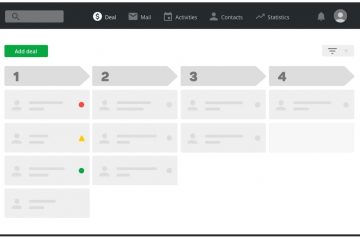How To Build Strong Relationships With SaaS Clients?
Creating a close connection with clients is invaluable for all sorts of organizations. But, it is especially beneficial for software as a service (SaaS) companies, which often have difficulties winning back lost customers. Because of this, firms that offer on-demand, subscription-based services pay a lot of attention to this aspect of running a business.
While not a straightforward task, proactively building positive relations with clients is more than worth the effort. For instance, doing so can boost customer satisfaction, raising a company’s bottom line without having to spend a fortune on marketing or developing new products.
Some excellent ways to build long-lasting relationships in today’s highly competitive market include offering personalized customer service, establishing trust, and always staying in touch with clients. Other than that, cooperating with customers on specific projects and explaining the working process right from the get-go are well-received practices.
Here is a list of steps companies can take to connect with their SaaS customers better than ever before:

Source: Unsplash
Provide More Personalized Customer Service
Nowadays, personalization is all the rage. In fact, many customers expect to be treated with a certain level of highly-personalized care. According to McKinsey, 71 percent of customers require companies to deliver personalized interactions. Consequently, they might take their business elsewhere if they do not receive enough attention or feel mistreated.
Personalized service is best described as providing customer experiences tailored to each client’s individual needs and preferences. For example, a company offering nangs delivery service might turn to something as simple as granting a customer free delivery or adding a particular product to a customer’s order with no additional cost. However, in the case of SaaS companies, things get a bit more complicated.
For a SaaS business, options to pamper its clients are limited. It cannot offer free delivery like a regular company from the example above. Still, any organization can stand out from the competition and offer unique customer service experiences — provided it knows what to do.
Besides offering support on multiple channels with omnichannel customer service, a SaaS company could implement a loyalty program or recommend new products its customers may like. It can also lower the price of using its software for a specific period, such as the holiday season.
Moreover, many firms collect customer data to further personalize their interactions with clients by referencing previous orders or past service issues. Thanks to it, they can build more personal relationships and convince their clients to continue using their services.
The common denominator is that all these examples offer a streamlined experience for customers, making their lives a little easier and less stressful. It is the key to keeping people happy and ensuring they return for more.
Overall, the more personal a company’s communication with customers, the better it is for everyone involved. As a result of this customer-oriented approach, people served by the company feel special, while the enterprise can enjoy a steady stream of revenue.
Establish Trust
Engaging customers on a whole other level requires an underlying layer of trust. Clients wary of a company’s policies and working methods may opt to limit their communication with client managers or avoid contacting them altogether. Ultimately, such a situation could lead to unpleasant consequences, including a client cutting ties with an organization.
Building each and every client relationship on trust is the best way to prevent this from happening. It makes this relationship feel more natural and gives the company a human face. Furthermore, it opens up new opportunities for collaboration in the future.
SaaS firms have many ways to grow their trustworthiness, from openly discussing their policies and business culture to familiarizing themselves more with their clients, their industry, and their problems. One good idea is to share a few things about a company that reaches beyond the confines of a strictly business-oriented relationship. It can open up communication and strengthen the bond between an enterprise and its clients.
Alternatively, a company can build and maintain trust by becoming acknowledged as an industry leader. To do so, it can publish in-depth articles explaining subjects related to its industry, attend conferences, and include customer feedback and testimonials on its website. These things can help a SaaS business acquire and retain loyal customers, taking it to the next level.
Once a SaaS business gets closely involved with customers, it can better understand their needs. This improved understanding leads to a more beneficial and fulfilling relationship for both parties.
Stay in Touch
Sometimes, waking up to no new messages is good news. Nevertheless, there is no getting around the fact that clients like to stay in the loop. Data from Statista suggests that about 70 percent of customers have a more favorable view of brands if they proactively contact them. As such, sending emails or calling clients to assure things proceed smoothly is essential.
The same rule applies to changes in a company’s policies or terms of service. A SaaS company that does not inform its clients about important decisions like these can quickly tarnish its reputation and lose clients’ respect.
For example, without any guidelines on timeframes, a customer may get angry while dealing with service representatives. In some cases, such a lack of communication can damage a relationship beyond repair.
Many businesses use more than one communication channel to keep their customers updated. Social media platforms, emails, phone calls, newsletters, and numerous other mediums work exceptionally well to stay in touch with clients and business partners.
Keeping people informed is pivotal to maintaining customer satisfaction. Every SaaS company should aim never to let its clients feel left alone or confused, as it can only harm their business.

Source: Unsplash
Cooperate With Your Clients
Cooperation is the foundation of a good relationship. Without it, communication between clients and a company will remain shallow and underwhelming. This element is also vital to transforming an organization into a more customer-oriented one, making it a more attractive brand for potential customers to interact with.
Working with clients and not for them offers many advantages. For starters, it is an outstanding way to receive better, more detailed feedback. Cooperation provides a common ground for businesses and their customers to share ideas, figure out which solutions work and which do not, and discuss much-needed upgrades.
Occasionally, customers may even teach the support team something new about a company’s services or products. A long-time client who uses the service daily might detect issues that went unnoticed during the development phase or suggest easy-to-implement improvements or might find a compelling use case for the product.
Nonetheless, probably the most valuable benefit of cooperation is that it ensures both sides are equally engaged in making their relationship more profitable. Being personally involved in something makes customers instantly more interested in it just by virtue of influencing how the situation will evolve.
Because of the benefits mentioned above, having a business-customer relationship founded on fruitful cooperation is a must-have for any SaaS company. Especially in today’s day and age, it is what separates good businesses from great ones.
Explain the Working Process
Finally, an efficient yet frequently overlooked practice is familiarizing clients with the working process before signing the contract. It helps a company get a hold of customers’ expectations and win their trust. But, the true value of this method lies in what it does for a customer.
From a client’s perspective, learning more about a company’s working process is a fantastic opportunity to explain what they are looking for and meet the people who stand behind the project. They can gain insight into the inner working of an organization that helps its clients by providing unique services every day.
During the meeting, clients can talk freely about their business goals and challenges. At the same time, the company’s representatives may respond, addressing these concerns immediately.
Even jumping on a call with a client can be beneficial. And, if some issues require face-to-face communication, tools like Zoom and Google Meet are excellent free options that can work if meeting over a cup of coffee in the office is out of the question.
Sharing how a company works, what steps are involved in the process, and how it has played out with other clients could be the final argument that turns a potential client into a loyal customer. It can help a SaaS firm position itself as a strategic and reliable business partner and get the relationship with a client off on the right foot.

Source: Unsplash
Final Thoughts
Meaningful relationships are the lifeblood of any successful business, including SaaS companies. Therefore, building a spider web of well-developed client relations is essential to running a SaaS firm.
One of the best ways to make a SaaS organization stand out regarding customer satisfaction is to establish trust between a firm and its clients. Doing so can significantly improve business-client relationships.
Other strategies worth considering include staying in touch with customers at all times, providing more personalized customer service, and cooperating with clients rather than working for them. Familiarizing customers with the working process can also be beneficial, as it can develop a special bond between them and a business.
While it can be tough, building long-lasting client relationships is crucial to help a company take the next step on the road to success. Following these guidelines can help businesses improve customer experience and build more successful business relationships with their SaaS clients.
Sell more, understand your customers’ journey for free!
Sales and Marketing teams spend millions of dollars to bring visitors to your website. But do you track your customer’s journey? Do you know who buys and why?
Around 8% of your website traffic will sign up on your lead forms. What happens to the other 92% of your traffic? Can you identify your visiting accounts? Can you engage and retarget your qualified visitors even if they are not identified?



